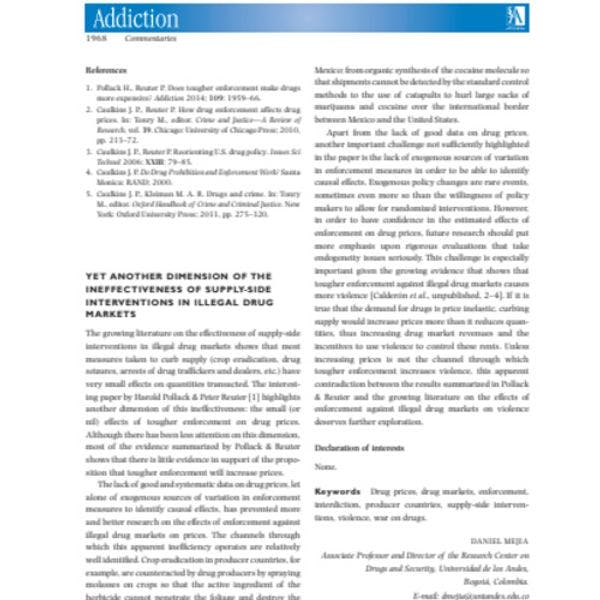Une preuve de plus sur l’inefficacité des interventions de réduction de l’offre de drogues
Les recherches de plus en plus importantes sur l’inefficacité des interventions de réduction de l’offre démontrent que la plupart de ces mesures ont très peu d’effet sur l’ampleur des transactions. Pour en savoir plus, en anglais, veuillez lire les informations ci-dessous.
Abonnez-vous à l'Alerte mensuelle de l'IDPC pour recevoir des informations relatives à la politique des drogues.
The growing literature on the effectiveness of supply-side interventions in illegal drug markets shows that most measures taken to curb supply (crop eradication, drug seizures, arrests of drug traffickers and dealers, etc.) have very small effects on quantities transacted. The interesting paper by Harold Pollack & Peter Reuter [1] highlights another dimension of this ineffectiveness: the small (or nil) effects of tougher enforcement on drug prices. Although there has been less attention on this dimension, most of the evidence summarized by Pollack & Reuter shows that there is little evidence in support of the proposition that tougher enforcement will increase prices.
The lack of good and systematic data on drug prices, let alone of exogenous sources of variation in enforcement measures to identify causal effects, has prevented more and better research on the effects of enforcement against illegal drug markets on prices.
The channels through which this apparent inefficiency operates are relatively well identified.
Crop eradication in producer countries, for example, are counteracted by drug producers by spraying molasses on crops so that the active ingredient of the herbicide cannot penetrate the foliage and destroy the plant; also, producers use better planting techniques and become more productive to compensate for the losses created by more eradication.
In wholesale markets, crackdowns on drug shipments and routes have led drug traffickers to devise more efficient ways to smuggle drugs from producer to consumer countries. In short, one of the most salient collateral effects of tougher enforcement in illegal drug markets is that it incentivizes technological progress among drug producers, traffickers and dealers in order to compensate for the losses created by it.
Examples of very creative smuggling techniques abound in Colombia and Mexico: from organic synthesis of the cocaine molecule so that shipments cannot be detected by the standard control methods to the use of catapults to hurl large sacks of marijuana and cocaine over the international border between Mexico and the United States.
Keep up-to-date with drug policy developments by subscribing to the IDPC Monthly Alert.
